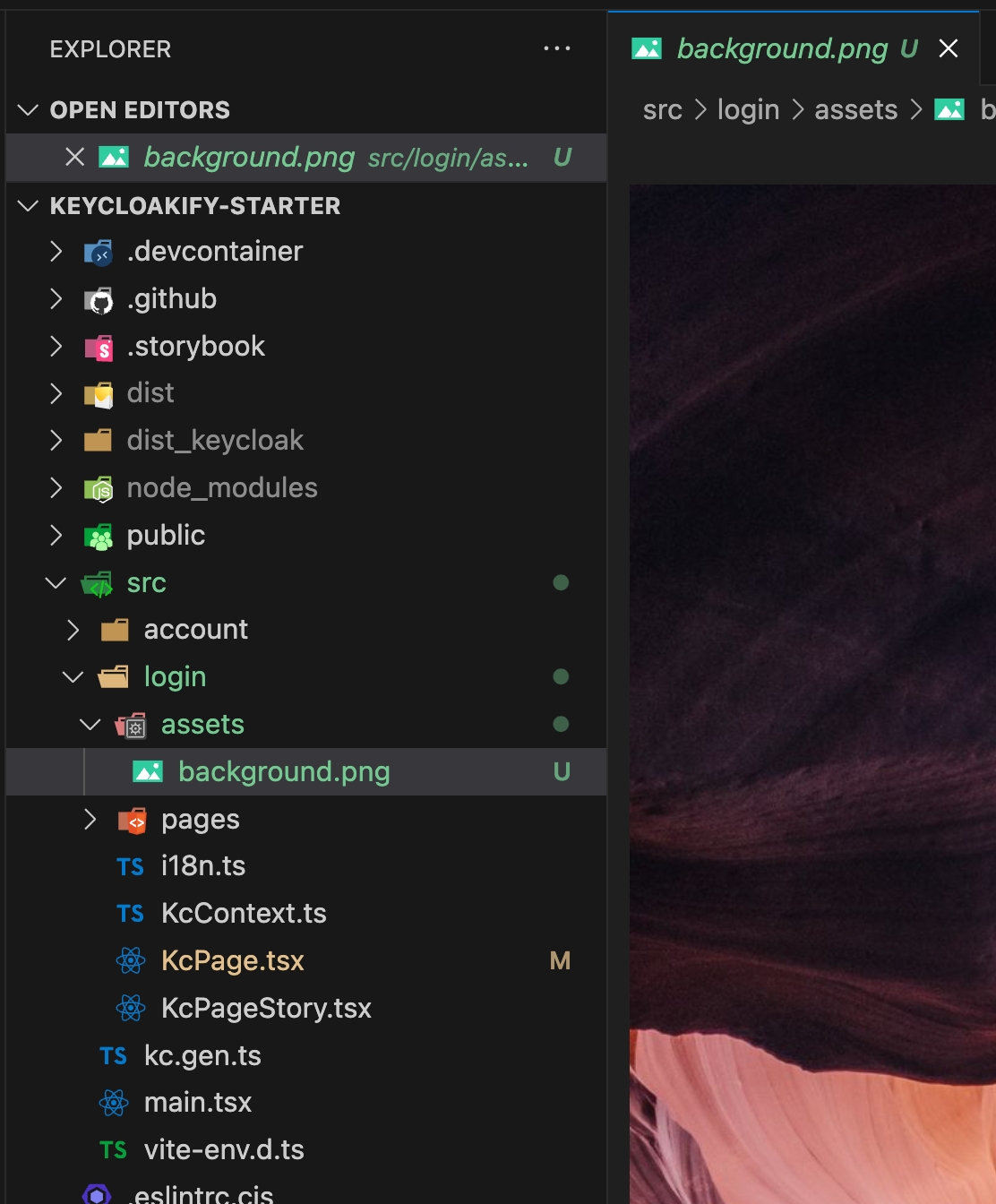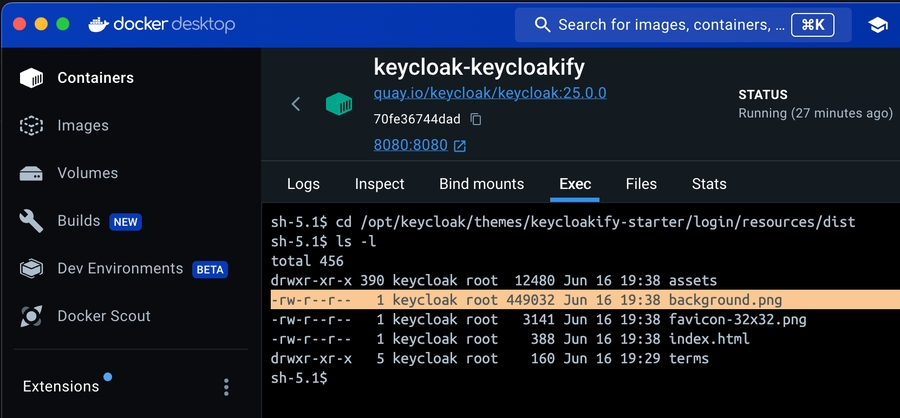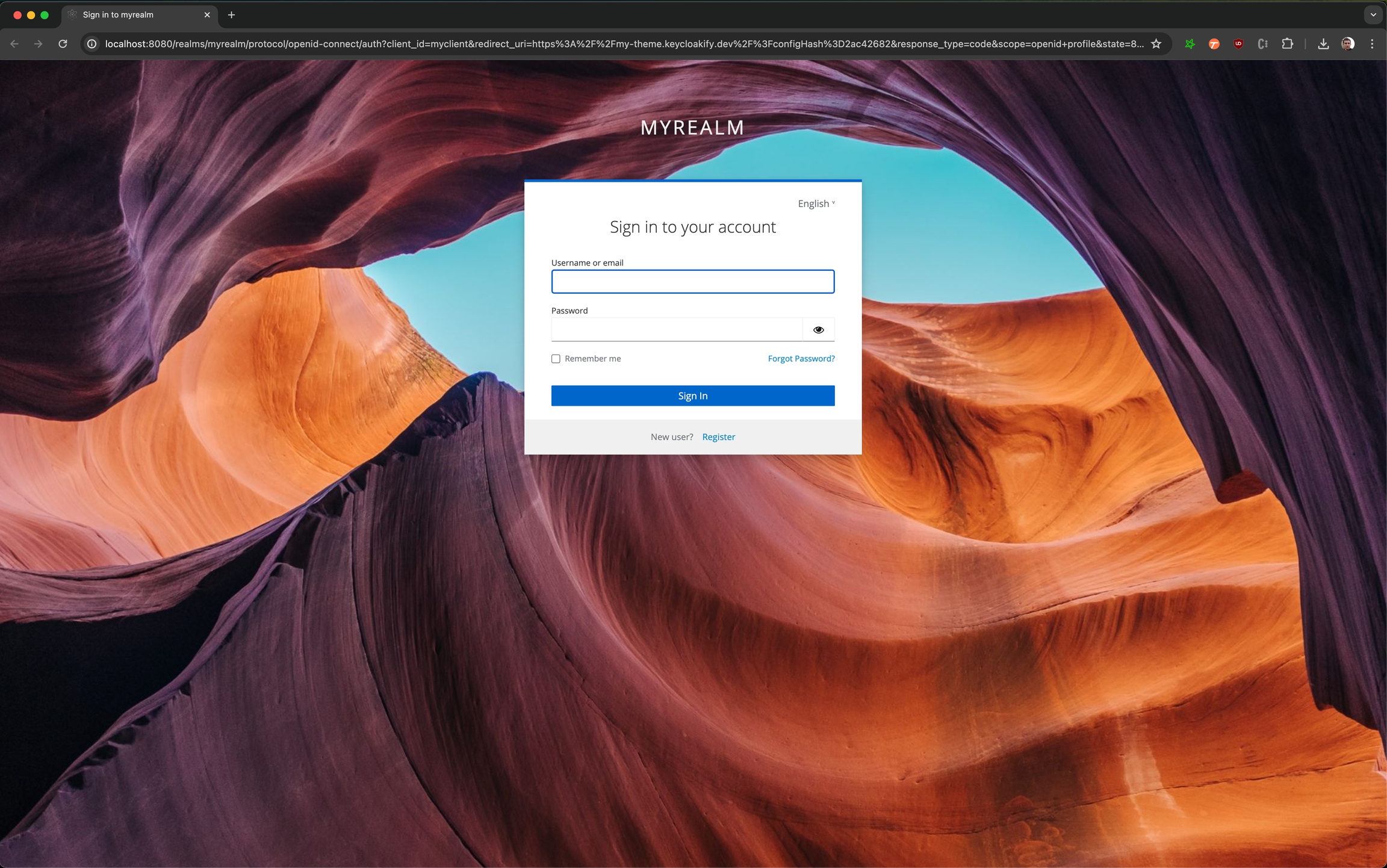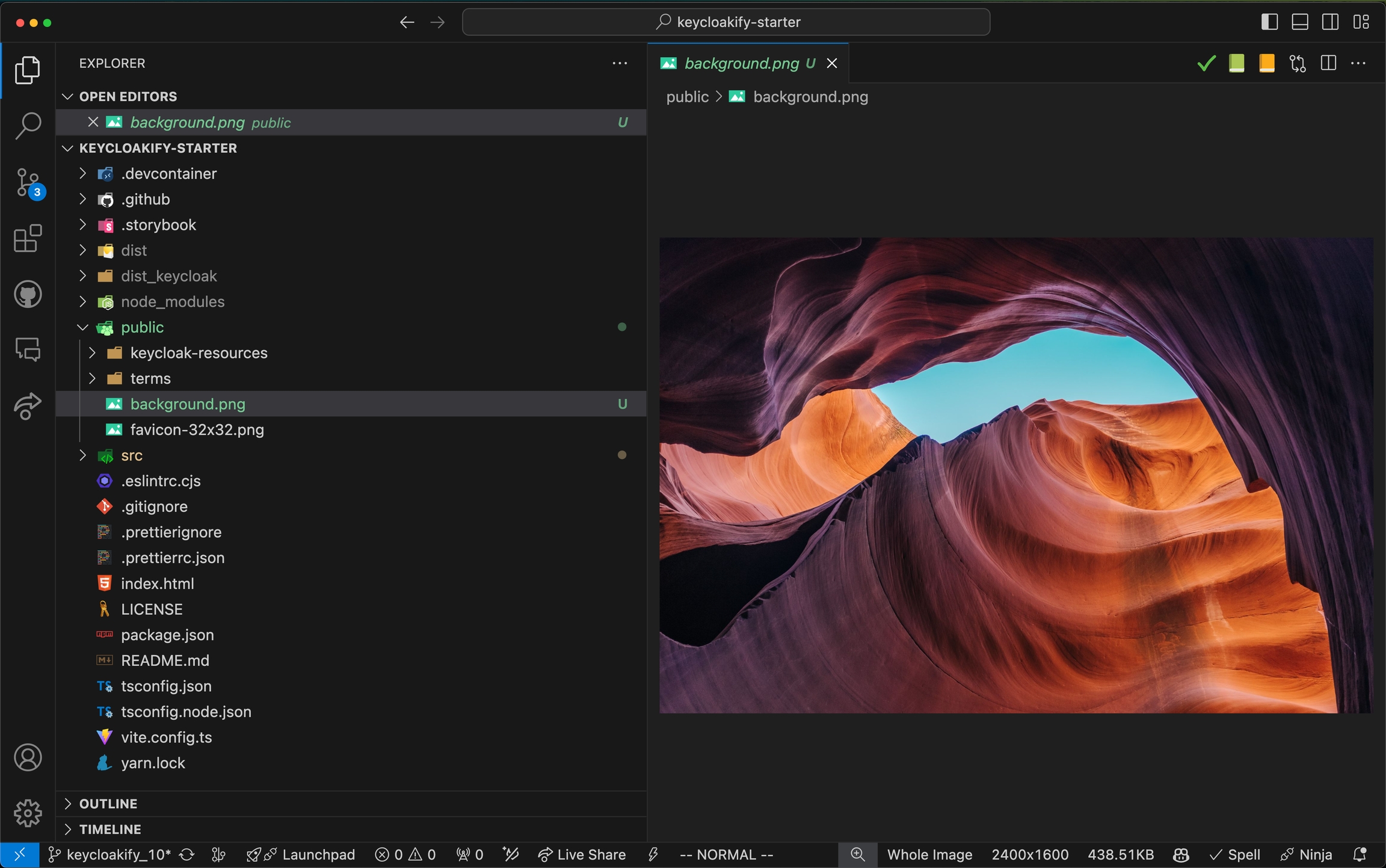TLDR: There is nothing specific to Keycloakify about importing assets. You can do it however you would in any other project.
Just if you're referencing assets that are in the public directory, use import.meta.env.BASE_URL
CSS-in-JS is preferable over plain CSS as it enables for more flexibility and is easier to maintain.
Let's see, as an example, the different ways you have to change the background image of the login page.
First let's download a background image an put it in our public directory:
If you wish to do so, you can hot swipe assets that you have placed into your public directory in your Keycloak instance files at:
/opt/keycloak/themes/<name of your theme>/<login|account>/resources/dist
Let's see how we can apply the image using a CSS-in-JS. In this example we'll use @emotion/css.
Result (see testing your theme):
Now let's go a little further, it's even better to let the bundler generate url for your imports instead of manually referencing files from your public directory. So, let's move the background image in src/login/assets/:
And in our code import it this way:
Now let's see how we can go further and apply different background on different pages of our theme:



